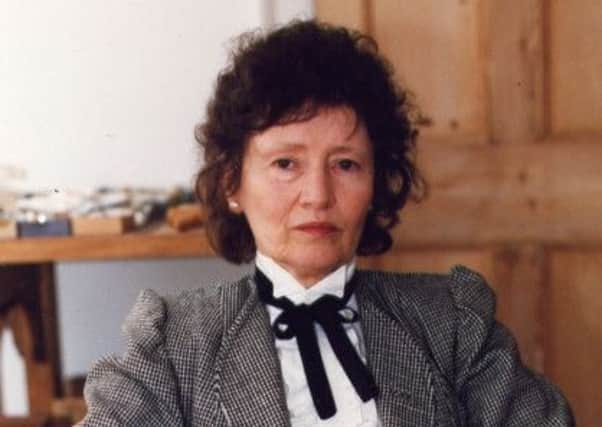Obituary: Naomi May, novelist


Naomi May was acknowledged as an exceptional novelist and short story writer specialising in capturing the stresses of family life and the strife between children growing up. She was also recognised as a painter of watercolours and her work was exhibited in various London galleries.
May devoted much time and energy, as a member of PEN’s Writers in Prison Committee, to spearheading campaigns for individual writers in prison around the world. Her commitment to several causes was boundless and her tenacity to see a project through never wavered.
Advertisement
Hide AdAdvertisement
Hide AdThe distinguished authority on Scottish literature, Professor Robert Crawford of St Andrews University, first met May when he was compiling a bibliography of modern Scottish writers for the British Council. He remembers her as being “good fun, considerate, generous, long-memoried and, I think, too often passed over by people writing about Scottish authors’’.
Naomi Young May (née Keanie) was born just outside Glasgow in Johnstone where her father owned a successful construction company. Her childhood was interrupted by the declaration of war and May firstly attended a boarding school in the Trossachs and then Millfield in Somerset.
May blossomed under the teaching of her English master Robert Bolt, who was later to find fame as the author of such plays as A Man For All Seasons and the film scripts for Lawrence of Arabia and Dr Zhivago. Bolt inspired May to write and the two became lifelong friends.
Another major influence was Jack House, the much loved Glasgow writer and broadcaster of the 1950s and 60s. House was one of the city’s abiding characters and wrote the acclaimed anthology, Heart of Glasgow. May and House remained in touch until his death in 1991.
May enrolled at the Slade School in London, winning the coveted History of Art prize in her final term. She continued to paint throughout her life, mostly watercolours, and over the years exhibited at various London galleries.
May had always loved writing as a child in Scotland and was a great observer of people and noted their idiosyncrasies with a keen eye. With her fervent imagination and her ability as a wordsmith she was able to bring to her novels an intimacy and warmth.
May’s novels were published by the Edinburgh house of Calder and Boyars (later John Calder Publications) and her first novel, At Home, written in 1969, the claustrophobic story of the domestic life of three women in Hampstead, won praise from reviewers (one called it “haunting and disturbing”). Professor Crawford has described it as “a minor classic’’.
The Adventurer, published in 1971, was set in Ayrshire and captures the atmosphere of a Scottish middle-class family where the polite veneer covers the frustrations and personal problems of the various individuals. Its central character breaks free from her traditional upbringing and May subtly turns the girl into the central character displaying a telling interest in feminism.
Advertisement
Hide AdAdvertisement
Hide AdIn the early 1970s May moved with her second husband to Belfast, where he was an accountant. Her 1976 novel Troubles is set in Northern Ireland and deals with the politics and domestic repercussions of events there. May was not afraid to write dispassionately about the sectarian strife and the deeply entrenched contrary views.
Writing the book on such a controversial subject was a sharp challenge which she met head-on, capturing the emotional trials and personal betrayals with unerring skill.
May summed up the endless killings and social unrest with a final poignant sentence: “It was through trivialities that she would survive.”
Back in London May continued to write and paint with her accustomed enthusiasm and energy. Last year she published her autobiography, Everyone Wore Hats, in which she recalled her childhood in Glasgow.
Her short stories appeared in a variety of literary magazines. She devoted much time to her work with PEN and she and her husband ensured that there was an English translation of Jiang Qisheng’s My Life in Prison: Memoirs of a Chinese Political Dissident. Among her many other campaigns was her unwavering support for the exiled Iranian journalist Yousef Azizi.
She also found time to curate exhibitions devoted to the German expressionist painter Felix Mueller at the Leicester Art Gallery and the Courtauld Institute.
May’s fiction had a zest and involved the reader at every turn. Her novels were invariably vibrant, edgy and tense and she painted vivid pictures of her characters with a graphic clarity.
As Professor Crawford wrote in his book, A History of Scottish Women’s Writing, May’s fiction was “daring and convincing in its emotional spectrum and its thematic range”.
May’s first marriage to Michael Kellaway was dissolved. She married Nigel May in 1964 and he and their two sons and a daughter survive her.
ALASDAIR STEVEN